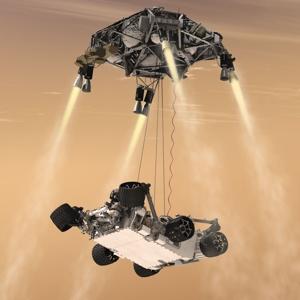Just before midnight last night, NASA successfully placed the aptly named Curiosity Rover on the surface of Mars: a high speed entry (13,000 mph), descent and landing that the space agency dubbed “seven minutes of terror.”
This is a good reminder that curiosity is an indispensable ingredient to innovation…and is usually attended by a healthy dose of fear. If you’re not scaring yourself once in a while, you’re probably not trying very hard.
Curiosity is what drove all the innovation and invention of NASA’s programs in the first place—curiosity about what exactly is out there in space and what are the implications for life on earth. The result has been a tsunami of information about the universe that ultimately spawned a massive wave of more questions, not to mention the myriad technological advances that we all benefit from today.

Curiosity has a place in business, not just science or technological innovation. A company that is not curious about its customers is sure to miss the most meaningful ways to engage them. For a firm like ours, we have to be curious about what our clients do and how they operate. We encourage that virtue among our artists and our account team.
Curiosity and creativity are inextricably linked. They both thrive on questions that begin with “Why…?” and “What if…?” Sure there is a time to implement and execute well. (Many of the most creative ideas fail due to poor implementation.) But without curiosity, one is constrained by what is and not emboldened by what could be.
Despite the efficiency-minded business culture in which we all work, I believe curiosity can be learned. It likely requires slowing down, or as someone once said:
“Don’t just do something. Stand there.”
Curiosity is all about observation, and allowing the questions to come to you. It is about letting go of pragmatism long enough to see if there is a worthier, more interesting objective to consider. As any teacher knows, when you move the class from asking “Is this gonna be on the test?” to “Wow, this is interesting” you’ve won the battle for young minds.
Contemplation precedes implementation, not just in the dictionary, but in successful quantum leaps of creativity in business, technology, marketing, the arts…the list goes on. Just as an electron in an atom, after receiving a burst of energy, leaps to a higher orbit around the nucleus, so periodic moments of curiosity and the blast of fresh insight that is bound to follow, take people and their organizations to the next level, a higher orbit, a rarified air that marks them out as innovators.
This is what it means to be a visionary. To have a constant sense of unsatisfied curiosity and a healthy dissatisfaction with current realities. And sometimes, if you are really lucky, once that higher orbit is reached, you fly back in at 13,000 mph for seven minutes of terror only to discover new questions along with even better answers.